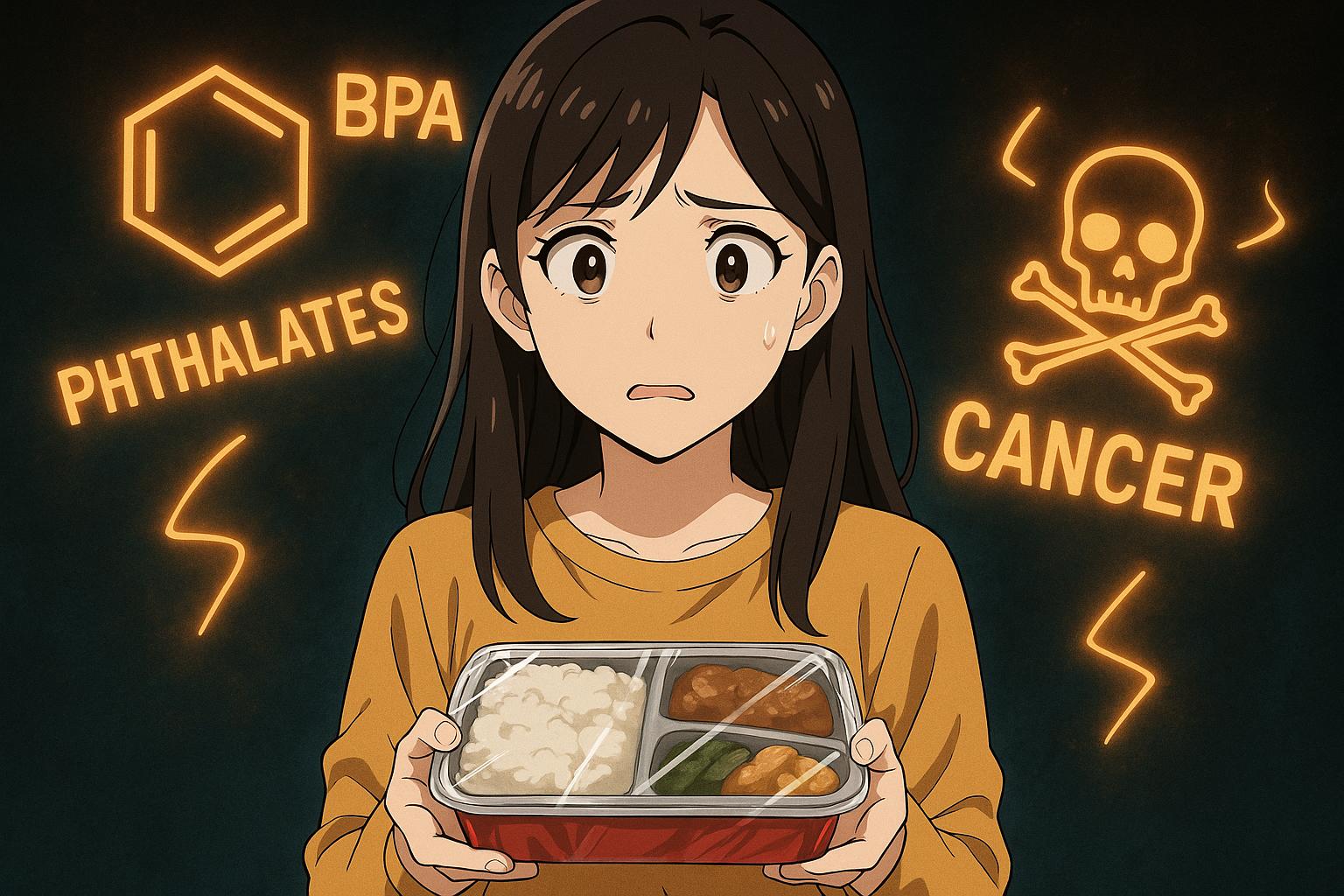Recent scientific investigations have raised significant concerns regarding food packaging, revealing its potential role in increasing our exposure to hazardous chemicals linked to severe health issues, including cancer. Analysts from the Food Packaging Forum Foundation in Switzerland have highlighted that current trends towards 'eco-friendly' packaging, often involving recycled plastics, may ironically heighten this risk rather than alleviate it. Their review underlines a troubling fact: the push for more recycled materials in everyday packaging can result in a greater migration of harmful substances into food, thereby posing a serious health threat.
The ongoing recycling processes concentrate hazardous materials, which can leach into food from various types of packaging. This effect is exacerbated when the food is subjected to heating—such as reheating ready meals—leading to an increased release of harmful chemicals. The report also signals additional risks associated with black plastic products, commonly used in kitchen utensils, which may contain dangerous compounds sourced from illicit recycling practices.
Notably, chemicals such as perfluoroalkyl and polyfluoroalkyl substances (known collectively as PFAS) have drawn considerable attention. These 'forever chemicals' are notorious for their persistence in the environment and biological systems. They have been linked to a host of health issues including various cancers, endocrine disruption, and developmental problems in children. Alarmingly, the review revealed that there is no established safe exposure limit for these substances, underscoring their severe implications for public health.
The research also draws attention to the concerning rise of ultra-processed foods (UPFs) in dietary consumption, particularly within the UK where they constitute roughly 57% of the national diet—a figure that is even higher in the United States. UPFs, which are characterised by additives that enhance shelf life and palatability, often come in packaging that may contain these harmful chemicals. The authors of the review emphasize that the prolonged storage of such foods, along with the industrial cooking processes they undergo, can further facilitate the transfer of toxic substances into the food.
Lead author Jane Muncke has called for a reevaluation of current policies surrounding food packaging. She stated that while research into the health impacts of UPFs is ongoing, the evidence is compelling enough that governments should take immediate action to limit the consumption of these products.
These warnings align with broader concerns voiced by health experts and legislative bodies across various countries, particularly around the safety of food additives. In the United States, for instance, many substances currently deemed 'Generally Recognized As Safe' are allowed under the FDA’s regulatory framework without rigorous independent evaluation, raising questions about their long-term health impacts. Notable chemicals of concern include bisphenol A (BPA), phthalates, and various food dyes that have been linked to endocrine disruption and other chronic illnesses.
A recent systematic review has further illuminated the scope of this issue, revealing over 3,600 chemical entities detected within human biological samples, many of which pose significant risks including carcinogenic properties. The urgency of regulatory reform has never been clearer, with scientists advocating for more robust measures to reduce human exposure to these harmful materials.
The findings urge consumers to be more discerning about dietary choices, favouring whole and organic foods over heavily processed options. Tools aimed at educating the public about food safety have begun to gain traction, helping individuals identify safer alternatives in their shopping habits. As awareness of these issues heightens, the pressure is mounting on both industry and regulatory bodies to introduce changes that prioritise public health and safety.
In summary, while advancements in food packaging technology aim to reduce environmental impact, they may inadvertently lead to increased risk from chemical exposure. This paradox highlights the need for comprehensive reforms to safeguard consumers against the latent dangers present in food packaging, ultimately promoting better health outcomes for society at large.
Reference Map
- Paragraph 1: Sources [1], [3]
- Paragraph 2: Sources [1], [3], [5]
- Paragraph 3: Sources [1], [2], [4]
- Paragraph 4: Sources [1], [3]
- Paragraph 5: Sources [2], [3]
- Paragraph 6: Sources [2], [4], [6]
- Paragraph 7: Sources [1], [6]
- Paragraph 8: Sources [1], [2], [5]
Source: Noah Wire Services
